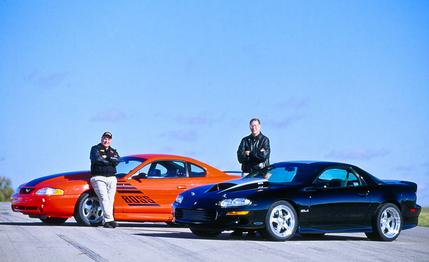
 Archived Comparison
Archived Comparison
Pony-car fans have more to be excited about today than they’ve had in 40 years—not only are both the Mustang GT and Camaro SS above the 400-hp threshold, but there’s even a horsepower war raging between the V-6 editions. Next week, we’ll post comparison tests between both the current eights and the sixes, but for now, enjoy this series of past encounters between two of Detroit’s most storied cars.
Through the entirety of their existence, the Camaro and Mustang have been irresistible canvasses for tuners and hot-rodders—many of whom come from within Chevrolet’s and Ford’s own walls. In January of 2000, we took the opportunity to match up the no-holds-barred baddest from both companies’ garages. Both packed motors edging 9.8 liters (that’s 600 cubic inches for you muscleheads), and the weaker of the two was pushing 770 horsepower. It was showdown for the ages.


Whozzat huff-and-puffer with the electric hair? You know, the guy who matches up fighters in those hyped-to-heaven slugfests. Yeah, that's him—Don King.
Well, we've out–Don King'd the man himself on this one, ginned up a face-off that makes the Thrilla in Manila seem like 14 rounds of patty-cake. Forget Marquess of Queensberry rules. We're going back to bare knuckles. Such a free-for-all, in the car culture, is called "run whutcha brung." No tech inspections, no EPA sniffers, no excuses. Just unload 'em and let it happen. This is about bragging rights, and corporate honor. Get ready for the Duke-out in Detroit!
It's FORD vs. CHEVY.
Somebody's gonna get an ear bitten off before this thing is over.
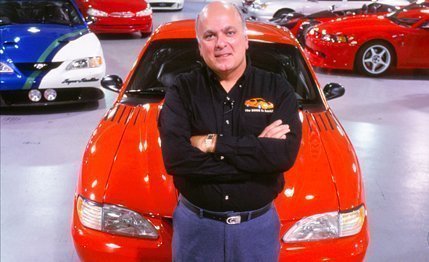

In the challenger's corner, holding the towel for the Mustang, and representing the bazillion stockholders of the Ford Motor Company, is John "The Quip" Coletti. "If he wins," he says of his GM opponent, "that Camaro is a helluva car, 'cause it's gonna take a helluva car to beat this Mustang."
The Camaro is the undisputed champ going into this bout, having bested the Mustang the last six times they've met on our pages. (Of course, those were production cars, and these are one-off fighting machines.) Defending that record, and standing as the Camaro's second in this match, is Jon "The Tower" Moss. At six foot seven, he doesn't have to raise his voice to be noticed.
This particular rivalry flamed up five years ago. Moss was manager of Chevrolet Special Vehicles, the department that builds the ooh-and-aah models for shows and other venues that keep the public whipped up about cars. No longer was a big-block V-8 being offered in the Camaro, but to keep the threat alive, Moss's crew had implanted an all-aluminum ZL-1 race motor into a slightly used 1993 model; actually, it was the company car Moss had been using as a commuter.
In bad-boy black, the ZL-1 Camaro was a snarling overdog, just right for bump-starting a buzz at the annual Las Vegas show put on by the go-fast parts industry. Coletti was there, checking out the enemy arsenal, when a Chevy man, noticing the Ford logo on his shirt, leaned close to Coletti and said, "I bet you haven't got anything in Dearborn that can tangle with this."
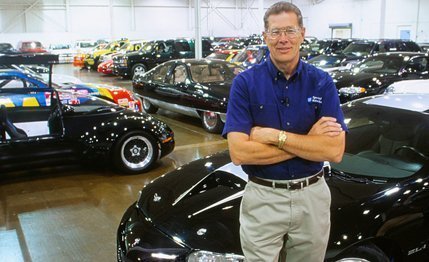

Russia's Khrushchev used to run his mouth like that, too, and it kicked the Cold War into overdrive, lasting another 35 years until his side went bankrupt trying to keep up with the West.
Did Chevyman know he was baiting Ford's war department? Coletti heads Special Vehicle Engineering (SVE), which creates niche-market, muscled-up models such as the SVT Contour and the supercharged SVT F-150 Lightning pickup with one hand, and with the other cooks up the one-off show cars that compete with Jon Moss's projects for the public eye.
Coletti and Moss were, and are, generals in opposing armies. Not that Coletti's first thought was bankrupting GM. Car guys who came of age during the muscle-car showdowns of the '60s, as he did, have a different reflex. He'd settle for a public humiliation; send that overdog Camaro home with its tail between its legs.
One big problem, though. Chevyman had guessed right; Dearborn didn't have anything that could tango with the steroid-injected Camaro.
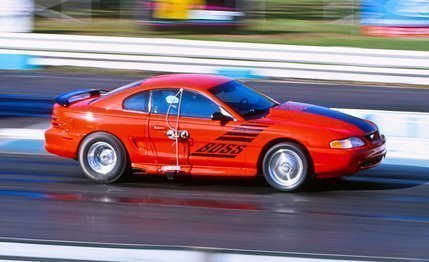

Still, if Moss could revive a '60s icon—the ZL-1 Camaro first appeared in 1969, strutting an aluminum-block 427—so could Coletti. Way back then, Ford answered Chrysler's 426 Hemi with a 429-cube semi-Hemi of its own; it had an angled-valve layout very similar to the Mopar's, with long exhaust rockers and ports like laundry chutes. Ford stuffed the broad-shouldered V-8 into just enough Mustangs (to make room, the front track had to be stretched wide) in 1969 and 1970 to meet NASCAR's homologation requirement. Boss 429 it was called, the overdog of its day. Hmm, Coletti schemed, why not build a brand-new Boss 429 and sic it on that Camaro?
Fast forward to October 1999. After several years of provocation from Coletti and "maybes" from Moss, the match is finally on. It'll go two rounds: one on a drag strip, one on a road course. These are street cars, at least in concept, so they'll wear what look like mufflers, and we'll pretend they're quiet enough. Racing gasoline will be the fuel. As for tires: whatever fits within the stock-appearing body contours.
On the day before round one, we visit the fighters in their respective gyms. Jon Moss has been promoted; now he's manager of a combined Special Vehicles operation for all GM divisions. He, the ZL-1 Camaro, and at least 100 other remarkable cars, await us in a well-lighted industrial building not far from GM's Tech Center in Warren, Michigan.
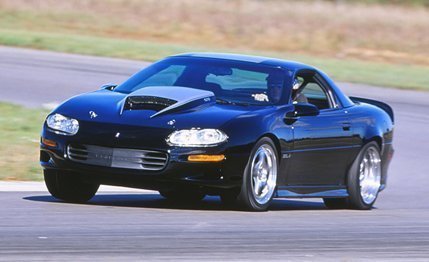

We see the Olds Recon, a concept sport-ute new for last season's Detroit auto show. We see the Astro II and the AstroVette, concept Corvettes from 1968 and 1978. We see the Buick Riviera convertible that paced the 1983 Indy 500 and the 1949 Olds convert that paced the same race 50 years ago. While Moss shows us the Chevy van built for Tim Allen's Tool Time TV show, a mechanic in a far-off service bay lights off the overdog. It fills the cavernous building with thunder—fierce combustion pulses hammering their way down exhaust pipes the size of rain gutters—and with the heavy rattle of a three-disc clutch lightened of all damping springs. It's a pagan noise, the racket of a machine that doesn't care what anyone thinks.
Moss, now 58, is an old-time engineer from the days when the technical culture demanded that you check your emotions at the door on the way in. Do the math, do the testing, and the truth will be revealed. But let your peers see that you'd fallen in love with something, a design or a mechanism, and they'd doubt your judgment forevermore. Now he's congenial to a point, like a poker player.
The Camaro wears a fresh suit of 1999 front sheetmetal. Its engine has four huge intake throats open to the hood scoop, a new arrangement since the last public showing. He explains that the old system backfired one day and blew apart the dual-plenum intake we'd been expecting.
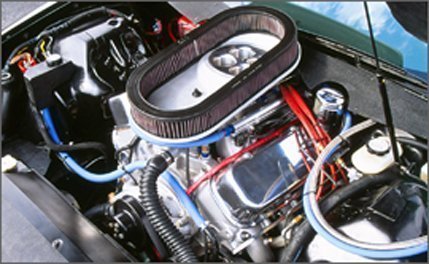

On the shiny side of the hood, painted on both sides of the scoop, are the numbers "572." That's cubic inches, he says. We leave the building thinking this Camaro should be "on the table" next time the world superpowers hold strategic arms reduction talks.
Across town in Dearborn, SVE holes up in an old Montgomery Ward warehouse. We arrive early. Coletti, a sparky 50-year old, says he's not, uh, dressed for the meeting. He ducks out, and returns in a black shirt with glowing orange embroidery. "The Boss is back!" it shouts. He leads us out to the shop, to an enclosure created by curtains hung to block our view of the prototypes beyond. Circled in the cold fluorescent light is a handful of SVE exotica, among them the smoothly chiseled V-12 mid-engined coupe that posed for our January 1995 cover; the bright-red "two-seat Indy car for the street," curiously named Indigo; a supercharged dual-fuel Mustang called the Super Stallion; and, of course, the Boss. It's an orangy red, with punchy black graphics and a huge "BOSS" on its flanks.

